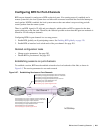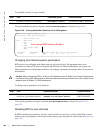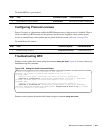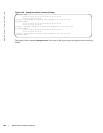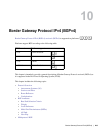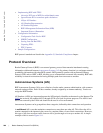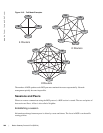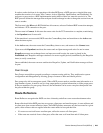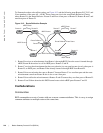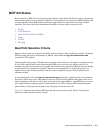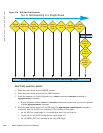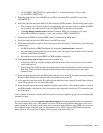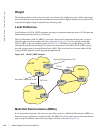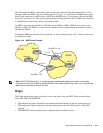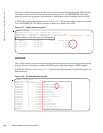Border Gateway Protocol IPv4 (BGPv4) | 209
In order to make decisions in its operations with other BGP peers, a BGP peer uses a simple finite state
machine that consists of six states: Idle, Connect, Active, OpenSent, OpenConfirm, and Established. For
each peer-to-peer session, a BGP implementation tracks which of these six states the session is in. The
BGP protocol defines the messages that each peer should exchange in order to change the session from one
state to another.
The first state is the Idle mode. BGP initializes all resources, refuses all inbound BGP connection attempts,
and initiates a TCP connection to the peer.
The next state is Connect. In this state the router waits for the TCP connection to complete, transitioning
to the OpenSent state if successful.
If that transition is not successful, BGP resets the ConnectRetry timer and transitions to the Active state
when the timer expires.
In the Active state, the router resets the ConnectRetry timer to zero, and returns to the Connect state.
Upon successful OpenSent transition, the router sends an Open message and waits for one in return.
Keepalive messages are exchanged next, and upon successful receipt, the router is placed in the
Established state. Keepalive messages continue to be sent at regular periods (established by the Keepalive
timer) to verify connections.
Once established, the router can now send/receive Keepalive, Update, and Notification messages to/from
its peer.
Peer Groups
Peer Groups are neighbors grouped according to common routing policies. They enable easier system
configuration and management by allowing groups of routers to share and inherit policies.
Peer groups also aid in convergence speed. When a BGP process needs to send the same information to a
large number of peers, it needs to set up a long output queue to get that information to all the proper peers.
If they are members of a peer group, however, the information can be sent to one place then passed onto
the peers within the group.
Route Reflectors
Route Reflectors reorganize the iBGP core into a hierarchy and allows some route advertisement rules.
Route reflection divides iBGP peers into two groups: client peers and nonclient peers. A route reflector and
its client peers form a route reflection cluster. Since BGP speakers announce only the best route for a given
prefix, route reflector rules are applied after the router makes its best path decision.
• If a route was received from a nonclient peer, reflect the route to all client peers.
• If the route was received from a client peer, reflect the route to all nonclient and all client peers.



